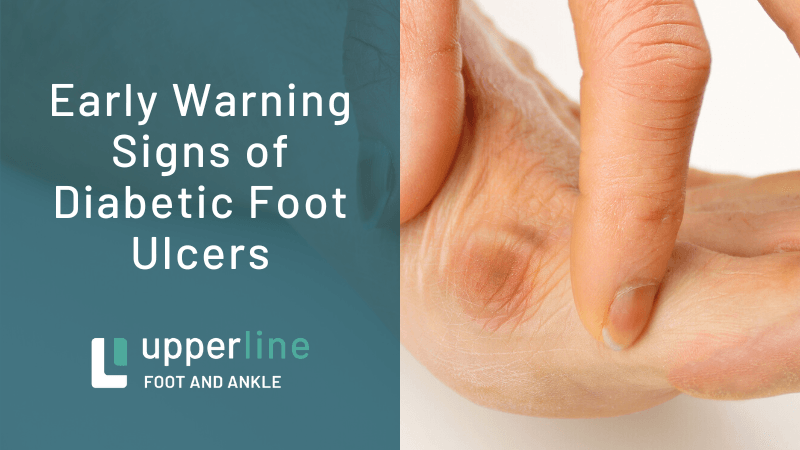Visit a Podiatrist for these Top 5 Foot and Ankle Symptoms

Are you currently experiencing a foot and ankle problem? Some foot-related conditions and diseases exhibit specific symptoms, putting you on notice. While your symptoms may be related to something minor, they could also signify that a significant foot or ankle problem is becoming worse.
If you happen to experience any new, unusual, or painful symptoms in your feet and ankles, understanding the potential causes and the potential treatments available will help get you started on your journey back to foot and ankle health.
According to the American Orthopedic Foot and Ankle Society, the best way to prevent ankle injuries is to maintain good strength, muscle balance, and flexibility.
Importance of Foot and Ankle Health
The foot and ankle involve an intricate and interconnected network of bones, tendons, ligaments, and muscles that all work together. This network provides your body with the stability it needs to function properly. The last thing you want to experience is a foot or ankle injury, like sprains and strains, as injuries can potentially make it so your feet and ankles provide you with less stability and support.
Poor foot and ankle health can even get in the way of your ability to perform your everyday responsibilities. Understanding some of the more common symptoms associated with foot and ankle problems helps to ensure your feet and ankles are always in good health. If you happen to experience one or more of the below symptoms, making an appointment with an experienced podiatrist is your next step.
Top Foot And Ankle Symptoms
Foot and ankle injuries are common, especially among those who participate in sports and high-impact exercises. Foot and ankle injuries tend to be more common when playing football, basketball, soccer, and volleyball.
See below to learn about the top symptoms people experience in their feet and ankles when something is wrong. If you're experiencing one or more of the below symptoms, know that these are warning signs that require you to see a podiatrist as a precautionary measure.
1. Swelling In The Feet And Ankles
Potential Causes: Pregnancy, Injury, Infections, Blood Clots, Edema, Damaged Valves, Poor-Fitting Shoes, Hot Weather
Potential Treatments: Exercising More Often, Increasing Fluids, Leg Elevation, Losing Weight, Taking Medications, Avoid Alcohol, Surgery, Making Healthy Lifestyle Changes, Proper-Fitting Shoes
Associated Diseases, Conditions: Diabetes, Heart Disease, Liver Disease, Kidney Disease
2. Heel Pain
Potential Causes: Vitamin Deficiency, Obesity, Poor-Fitting Shoes, Heel Spurs, Osteomyelitis (a bone infection)
Possible Treatments: Rest, Prescription and Over-The-Counter Medications, Night Splints, Heel Lifts, Proper-Fitting Shoes, Performing Special Exercises
Associated Diseases, Conditions: Plantar Fasciitis, Achilles Tendinitis, Bursitis, Achilles Tendon Rupture, Bone Tumor, Paget's Disease of Bone, Diabetes
3. Pain Of The Big Toe And Toenail
Potential Causes: Injury, Overstrains, Ingrown Toenail, Fungal Infection, Bunions, Poor-Fitting Shoes
Possible Treatments: Heat, Ice Therapy, Epson Salt Soak, Prescription, and Over-The-Counter Medications, Surgery, Proper-Fitting Shoes, Performing Special Exercises
Associated Diseases, Conditions: Diabetes, Gout (a painful type of arthritis), Morton’s Toe, Turf Toe
4. Loss Of Feeling, Numbness, Or Tingling In The Feet And Toes
Potential Causes: Injury, Infection, Poor-Fitting Shoes (Compression), Peripheral Neuropathy, Nerve Damage, Chronic Alcohol Abuse
Possible Treatments: Rest, Massage, Supportive Devices, Proper-Fitting Shoes, Antidepressants, Corticosteroids, Healthy Diet, Alcohol Avoidance
Associated Diseases, Conditions: Diabetes, Multiple Sclerosis (MS), Peripheral Artery Disease, Fibromyalgia, Charcot-Marie-Tooth Disease, Sciatica
5. Pain And Stiffness In The Feet, Ankles, Or Toes
Potential Causes: Poor-Fitting Shoes, Soft-Tissue Injuries, Overuse, Inflammation, Wear And Tear In Joint Cartilage
Possible Treatments: Rest, Performing Special Exercises, Proper-Fitting Shoes, Prescription, and Over-The-Counter Medications, Surgery
Associated Diseases, Conditions: Rheumatoid Arthritis, Post-Traumatic Arthritis, Peripheral Neuropathy
The Bottom Line on Foot and Ankle Health
When you understand the potential causes of a foot or ankle injury, you can take the preventive measures necessary that can help you avoid being diagnosed with future podiatry problems. Don’t wait for your symptoms to worsen. It’s always easier to treat foot and ankle issues early.
As foot and ankle issues can range from the very simple to the relatively complex, anytime you’re experiencing symptoms in these areas, you should schedule an appointment with a professional podiatrist for a full evaluation.










